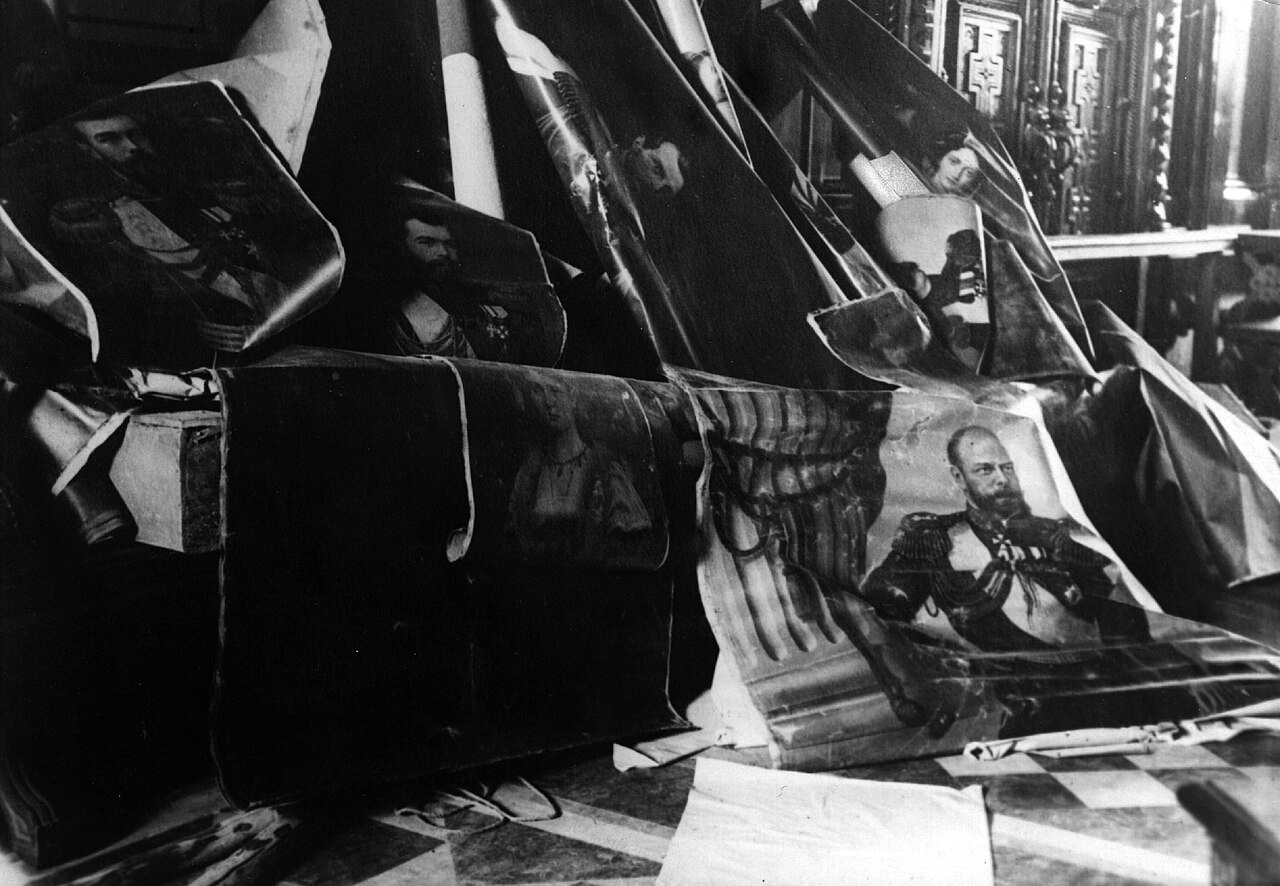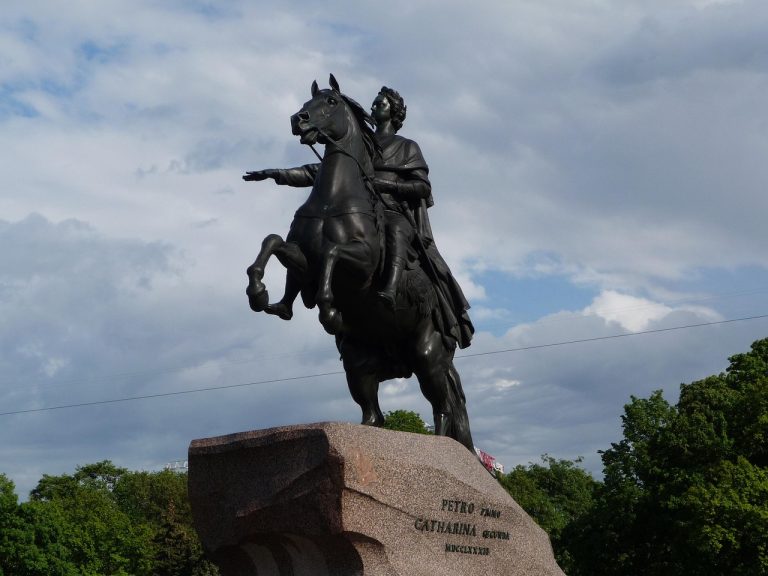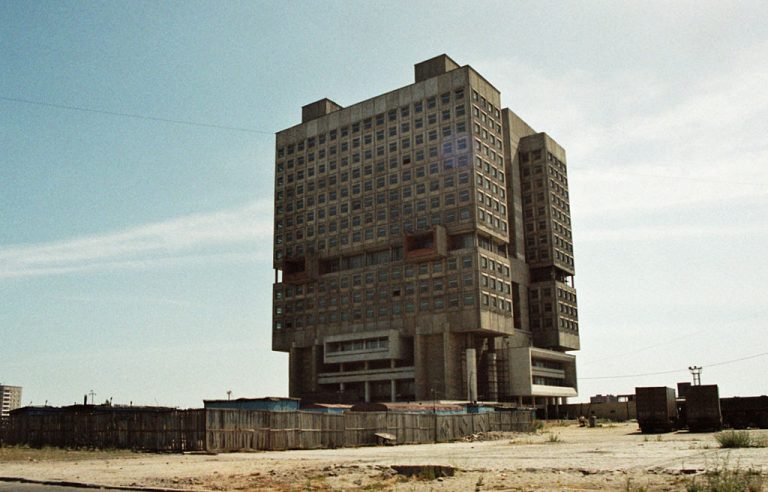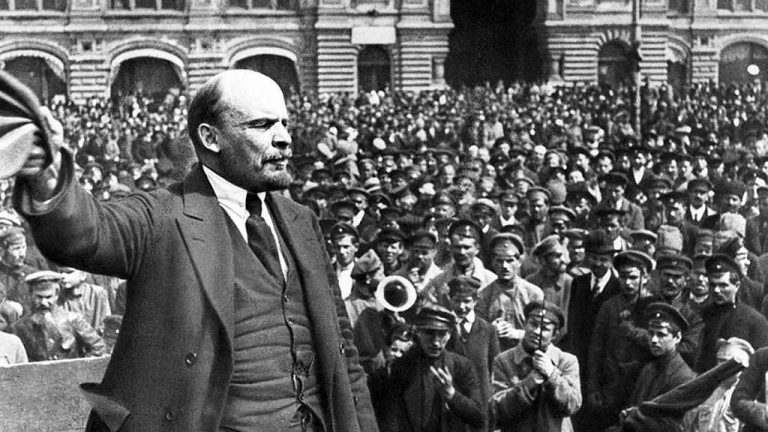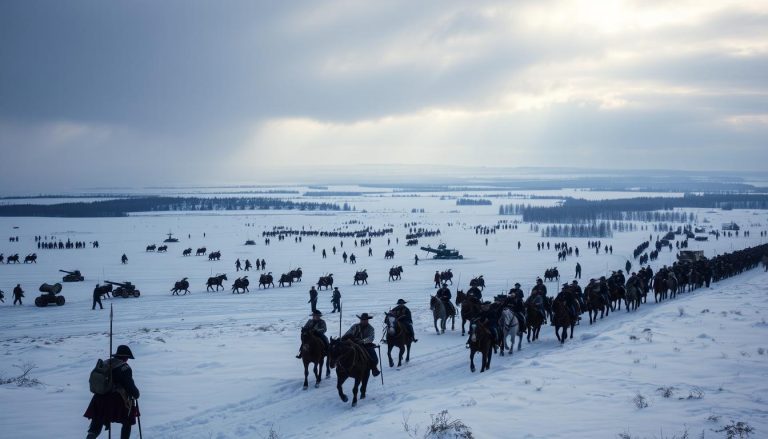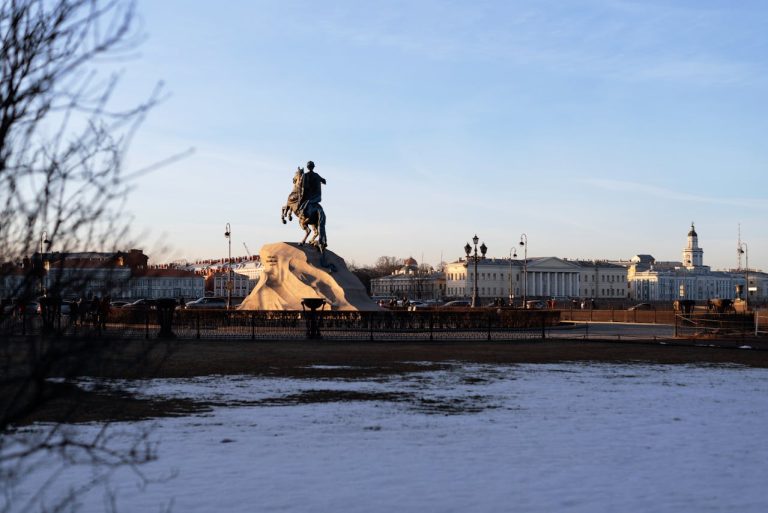A timeline helps us understand a long history. This guide lists Russian leaders from Moscow’s rise to today’s presidency. It shows how power changed hands, titles evolved, and each era shaped Russia.
The journey begins with the Danilovich branch of the Rurikids in the late 1200s. It includes Ivan III and Vasily III, who united the lands. Then, Ivan IV became the first tsar, followed by Fyodor I, ending the Rurikid line.
The Time of Troubles brought quick changes. Leaders like Boris Godunov, Fyodor II, and False Dmitry followed. Then, Vasily Shuysky and an interregnum came next.
Stability returned with the Romanovs. Michael I and Alexis set the stage, and Peter I became the first “emperor” in 1721. The Romanov and Holstein-Gottorp lines continued through Catherine II and Nicholas II, the last czar.
In 1917, the Provisional Government under Georgy Lvov and Alexander Kerensky bridged the old and new worlds. The story then follows civil war leaders like Alexander Kolchak and Pyotr Wrangel. Soviet party chiefs from Vladimir Lenin to Mikhail Gorbachev are also included.
It also lists RSFSR heads from Lev Kamenev to Mikhail Kalinin. The handoff to Boris Yeltsin is noted. The modern line of presidents includes Yeltsin, Vladimir Putin, Dmitry Medvedev, and back to Putin.
This guide places famous Russian leaders alongside lesser-known figures. It shows how they shaped Russia’s rules, borders, and institutions. The list is broad but follows a clear path through Russian history.
From Muscovy to Tsardom: Early Princes and Tsars of Russia
Moscow starts as a strong outpost on rivers, led by the Danilovich branch of the Rurikids. The titles change as the map does. It grows from a small princedom to a big tsardom known in Europe.
This journey shows notable Russian rulers and key historical figures. They help us understand the path to becoming a tsardom.
Princes and Grand Princes of Moscow (Danilovich/Rurikid): Daniel to Ivan III
Daniel, Alexander Nevsky’s son, rules Moscow from about 1276 to 1303. He starts the dynasty. The line grows with Yury, Ivan I, Semyon, and Ivan II, expanding Moscow’s area.
Dmitry Donskoy is famous after Kulikovo. Then come Vasily I, Vasily II, and Ivan III. Their rule is a clear thread in Russian history.
Centralization Under Ivan III and Vasily III
Ivan III unites Moscow’s lands under one rule. He uses imperial symbols like seals and court styles. This makes Moscow look like a rising power.
Vasily III keeps Moscow’s growth going. He tightens rule and prepares for the next big step in Russian history.
Ivan IV (The Terrible): From Grand Prince to First Tsar, 1547–1584
Ivan IV becomes grand prince in 1533. In 1547, he crowns himself tsar. This shows Moscow’s rise as a world power.
His rule is marked by conquests and internal struggles. His name is a key part of Russian history.
Succession to Fyodor I and the End of the Rurikid Tsars
After Ivan IV’s death, Fyodor I becomes tsar in 1584. He rules until 1598, ending the Rurikid line. The title “tsar” remains, even after styles change.
Fyodor’s reign marks the end of an era. It’s a key part of Russian history and leadership.
Time of Troubles and the Rise of the Romanovs
The throne becomes unstable after Fyodor I. Russia enters a period of coups, claimants, and foreign pressure. Influential leaders emerge as survival figures, trying to keep the state together.
Time of Troubles Leaders: Boris Godunov, Fyodor II, False Dmitry, Vasily Shuysky
Boris Godunov rules from 1598 to 1605, facing famine and unrest. His young heir, Fyodor II, lasts only weeks in 1605. A pretender, False Dmitry, holds Moscow in 1605–1606, then falls to a coup.
Vasily IV Shuysky rules from 1606 to 1610. Boyars trade loyalties, and the frontier cracks. These leaders show why they often had to manage crises first.
Interregnum of 1610–1612 and the Path to Restoration
After Shuysky, the Interregnum hits hard. Polish-Lithuanian forces invade, and boyar blocs paralyze decision-making. Local militias, led by Kuzma Minin and Prince Dmitry Pozharsky, retake Moscow in 1612.
The Zemsky Sobor then meets to choose a stabilizer. This move sets the stage for restoring a working state.
Romanov Dynasty Begins: Michael I (1613–1645) and Alexis (1645–1676)
In 1613, the Zemsky Sobor selects Michael Romanov, a cautious teenager. He rebuilds diplomacy and eases tax strains. His son, Alexis, broadens the bureaucracy and standardizes laws.
These steps move Russian governance from emergency rule to durable governance.
From Peter I and Ivan V’s Co-Rule to Peter the Great’s Empire Title in 1721
By the 1680s, Peter I and Ivan V share the throne. Sophia Alekseyevna acts as regent. Peter later rules alone, overhauling the army and navy, and founds Saint Petersburg.
On October 22 (O.S.), 1721, he adopts the title “emperor.” This signals European ambitions. Though the line shifts to the Holstein-Gottorp branch after Elizabeth in 1761, the Romanov label stays. Peter stands among key figures whose change redefined the map and state.
Russian Leaders in Order
Here is a quick list of Russian leaders from medieval times to today. It shows how power changed hands through palace shifts, battles, and reforms. This list is easy to scan and highlights key figures across different eras.
- Daniel of Moscow (c. 1276–1303)
- Yury (1303–1325)
- Ivan I Kalita (1325–1340)
- Semyon the Proud (1340–1353)
- Ivan II (1353–1359)
- Dmitry II Donskoy (1359–1389)
- Vasily I (1389–1425)
- Vasily II (1425–1462)
- Ivan III (1462–1505)
- Vasily III (1505–1533)
- Ivan IV as grand prince (1533–1547)
- Ivan IV as tsar (1547–1584)
- Fyodor I (1584–1598)
- Boris Godunov (1598–1605)
- Fyodor II (1605)
- False Dmitry I (1605–1606)
- Vasily IV Shuysky (1606–1610)
- Interregnum (1610–1612)
- Michael I (1613–1645)
- Alexis (1645–1676)
- Fyodor III (1676–1682)
- Peter I and Ivan V, co-rulers (1682–1696)
- Peter I as emperor (title from 1721)
- Catherine I (1725–1727)
- Peter II (1727–1730)
- Anna (1730–1740)
- Ivan VI (1740–1741)
- Elizabeth (1741–1761 O.S.)
- Peter III (1761–1762 O.S.)
- Catherine II (1762–1796)
- Paul I (1796–1801)
- Alexander I (1801–1825)
- Nicholas I (1825–1855)
- Alexander II (1855–1881)
- Alexander III (1881–1894)
- Nicholas II (1894–1917)
- Georgy Lvov, Provisional Government (March–July 1917)
- Alexander Kerensky, Provisional Government (July–Nov 1917)
- Vladimir Lenin, de facto national leader (1917–1924)
- Joseph Stalin (1924–1953)
- Georgy Malenkov (1953)
- Nikita Khrushchev (1953–1964)
- Leonid Brezhnev (1964–1982)
- Yury Andropov (1982–1984)
- Konstantin Chernenko (1984–1985)
- Mikhail Gorbachev (1985–1991)
- Lev Kamenev, RSFSR head of state (Nov 1917)
- Yakov Sverdlov (1917–1919)
- Mikhail Vladimirsky, acting (1919)
- Mikhail Kalinin (1919–1938)
- Andrei Zhdanov (1938)
- Aleksei Badayev (1938–1943)
- Ivan Vlasov, acting (1943–1944)
- Nikolai Shvernik (1944–1946)
- Ivan Vlasov (1946–1950)
- Mikhail Tarasov (1950–1959)
- Nikolai Ignatov (1959)
- Nikolai Organov (1959–1962)
- Nikolai Ignatov (1962–1966)
- Mikhail Yasnov (1966–1985)
- Vladimir Orlov (1985–1988)
- Vitaly Vorotnikov (1988–1990)
- Boris Yeltsin, Chairman of the Supreme Soviet then President of the RSFSR (1990–1991)
- Alexander Kolchak, Supreme Ruler (Nov 1918–Feb 1920)
- Anton Denikin, White movement (1919–1920)
- Pyotr Wrangel, White movement (1920)
- Spiridon Merkulov, Priamurye (1921–1922)
- Mikhail Diterikhs, Priamurye (1922)
- Anatoly Pepelyayev, Priamurye (1922–1923)
- Boris Yeltsin, President of Russia (1991–1999)
- Alexander Rutskoy, acting (1993)
- Viktor Chernomyrdin, acting (1996)
- Vladimir Putin, acting (1999–2000)
- Vladimir Putin (2000–2008)
- Dmitry Medvedev (2008–2012)
- Vladimir Putin (2012–present)
This list is a quick guide to Russian leaders from the past to today. It shows how power changed hands through palace shifts, battles, and reforms. It highlights key figures across different eras.
- Medieval to early modern: Moscow’s princes evolve into tsars, then emperors.
- Revolution and civil war: Provisional ministers and White leaders overlap with party chiefs.
- Late 20th century to today: The presidency anchors the state, closing the loop on Russian leaders in order.
Russian Czars to Soviet Chairmen to Presidents: A Complete Political Timeline
Power in Russia changed a lot over time. It moved from the empire to Soviet rule and then to the modern state. This change is shown by the leaders who ruled Russia.
Romanov and Holstein-Gottorp Rulers: Catherine II to Nicholas II (1762–1917)
Catherine II expanded Russia’s borders and brought European culture to the court. Paul I made sure the throne would pass down in a certain order. Alexander I met Napoleon and changed the map of Europe after 1812.
Nicholas I ruled with a tight hand. Alexander II freed the serfs, a big change. Alexander III focused on keeping things stable. Nicholas II faced wars, uprisings, and the end of the Romanov dynasty.
1917 Provisional Government: Georgy Lvov and Alexander Kerensky
In 1917, Georgy Lvov led the first government after the empire. By summer, Alexander Kerensky took over and declared a republic.
But, the power kept slipping away. The Bolsheviks later shut down the Constituent Assembly, limiting choices among Russian leaders.
Anti-Bolshevik “Russian State” and White Movement Figures: Kolchak, Denikin, Wrangel
Admiral Alexander Kolchak became the Supreme Ruler in Siberia. In the south, Anton Denikin and then Pyotr Wrangel fought against the Reds.
On the Pacific rim, Spiridon Merkulov, Mikhail Diterikhs, and Anatoly Pepelyayev tried to hold ground. Their efforts faded by mid-1923, yet they remain influential Russian leaders in a fractured civil war map.
Soviet Era Party Leaders: Lenin, Stalin, Khrushchev, Brezhnev, Andropov, Chernenko, Gorbachev
Vladimir Lenin set up the party-led state. Joseph Stalin built a command system and won a brutal war. Georgy Malenkov’s brief turn gave way to Nikita Khrushchev’s thaw and space-age push.
Leonid Brezhnev defined long stability. Yuri Andropov and Konstantin Chernenko kept the late-era line. Mikhail Gorbachev opened politics, steering the close of the Soviet period within the broader Russian presidents timeline.
RSFSR Heads of State Framework: Kamenev to Kalinin; Badayev to Vorotnikov; Yeltsin as Chairman/President of RSFSR
Lev Kamenev and Yakov Sverdlov fronted the earliest RSFSR structure. Mikhail Kalinin’s long tenure set the rhythm for the Soviet republic’s formal headship.
Later chairs included Alexei Badayev, Mikhail Yasnov, and Vitaly Vorotnikov. In 1990–1991, Boris Yeltsin rose from Chairman to President of the RSFSR, a hinge moment that clarified Russian leaders in order before statehood changed again.
Russian Federation Presidents: Boris Yeltsin, Vladimir Putin, Dmitry Medvedev, Vladimir Putin
Boris Yeltsin served from 1991 to 1999, amid market shocks and a new constitution. Acting stints by Alexander Rutskoy and Viktor Chernomyrdin marked crises, with Vladimir Putin acting in 1999–2000.
Putin held the presidency from 2000 to 2008. Dmitry Medvedev followed from 2008 to 2012. Putin returned from 2012 onward, with election wins in 2012, 2018, and 2024—anchor points for any Russian presidents timeline and a key reference for influential Russian leaders and other Russian political figures in the post-Soviet era.
Notable Figures and Turning Points in Russian Political History
Some moments in history stand out more than others. Ivan III helped Moscow grow by forming new alliances. Vasily III then brought more lands under Moscow’s control. These actions paved the way for later leaders.
In 1547, Ivan IV became the first tsar, changing how Russia was ruled. Later, Fyodor I ended the Rurikid dynasty, marking a significant change. The Time of Troubles followed, with leaders like Boris Godunov and False Dmitry.
From 1610 to 1612, Russia was without a leader. Then, Michael I and later Alexis brought stability. Peter I, who ruled with Ivan V, introduced the title of “emperor” in 1721.
Elizabeth’s death in 1761 led to a new era under the Romanovs. In 1917, Georgy Lvov and Alexander Kerensky led the Provisional Government. The Bolsheviks later took control, changing Russia’s path.
During the Civil War, Admiral Alexander Kolchak claimed to be the Supreme Ruler. Others like Denikin and Wrangel fought in the south. In the Far East, figures like Spiridon Merkulov and Anatoly Pepelyayev resisted until 1923.
The Soviet era was marked by strong leaders like Lenin and Stalin. Later, Khrushchev, Brezhnev, and Gorbachev introduced reforms. These changes show how leaders can shape a system without changing borders.
Inside the RSFSR, leaders like Lev Kamenev and Mikhail Kalinin played key roles. Boris Yeltsin became president in 1991, marking a significant shift. The current leaders, including Putin, continue this legacy.
These moments highlight why studying Russian leaders is important. Each change, from title to party, shows how leaders adapted to their times. This is why Russian leaders remain a subject of interest today.
Conclusion
From medieval Moscow to today’s Kremlin, power has been shaped by crisis and reform. The Danilovich line paved the way for Ivan IV to become the first tsar. The Time of Troubles tested the state but it survived long enough for the Romanovs to grow and order.
The Romanovs expanded power, and later the Holstein-Gottorp branch carried this forward. Reading about Russian leaders in order, we see a clear story, even with title changes.
In 1917, Russia split apart with the Provisional Government and civil war. But the Soviet party leaders soon took control. Inside the RSFSR, chairs and presidiums formed a backbone through the Soviet years.
This story ends with Boris Yeltsin’s elected presidency in 1991. This was a key moment in any Russian presidents timeline.
Today, we see a line from princes to presidents: Yeltsin, Putin, Medvedev, Putin. For those mapping Russian political figures, it’s helpful to categorize them. This way, we see influential Russian leaders as part of a continuous story.
This view makes russian leaders in order more than just a list. It’s a story of city-state princes, tsars, emperors, commanders, and elected leaders. It’s a guide to Russia’s changes and how power adapted over seven centuries.
FAQ
Who Are the Russian Leaders in Order From Medieval Muscovy to Today?
The list starts with the Danilovich branch of the Rurikids in Moscow. It includes Daniel, Yury, Ivan I, Semyon, Ivan II, Dmitry Donskoy, Vasily I, Vasily II, Ivan III, and Vasily III. Ivan IV then becomes the first tsar (1547–1584).
After that, Fyodor I rules. The Time of Troubles follows, with leaders like Boris Godunov, Fyodor II, False Dmitry, and Vasily IV Shuysky. Then, there’s an Interregnum (1610–1612).
The Romanovs begin with Michael I and Alexis. They run through Peter I, Catherine II, and end with Nicholas II (1917). After the Provisional Government, Soviet leaders take over—Lenin to Gorbachev. Modern Russia’s presidents include Boris Yeltsin, Vladimir Putin, Dmitry Medvedev, and Vladimir Putin again.
What Changed When Ivan IV Took the Title of Tsar in 1547?
Ivan IV’s move from grand prince to tsar was a big deal. It showed Russia was on par with European monarchs. This change brought stronger central power, formal court rituals, and a more assertive foreign policy.
How Did Russia Transition From the Time of Troubles to the Romanov Dynasty?
After Boris Godunov, Moscow faced crisis and foreign intervention. The Zemsky Sobor elected Michael Romanov in 1613, bringing stability. Michael I and Alexis rebuilt the administration, preparing for Peter I’s reforms.
Who Counts as the National Leader During the Soviet Period—Heads of State or Party Chiefs?
The Communist Party’s top leader set the national direction. Leaders included Vladimir Lenin, Joseph Stalin, Georgy Malenkov, Nikita Khrushchev, Leonid Brezhnev, Yury Andropov, Konstantin Chernenko, and Mikhail Gorbachev.
Where Do Anti-Bolshevik Leaders Like Kolchak, Denikin, and Wrangel Fit in the Timeline?
They led the Civil War–era “Russian State” and White forces against the Bolsheviks. Admiral Alexander Kolchak was Supreme Ruler (1918–1920). Generals Anton Denikin and Pyotr Wrangel commanded major southern fronts.
